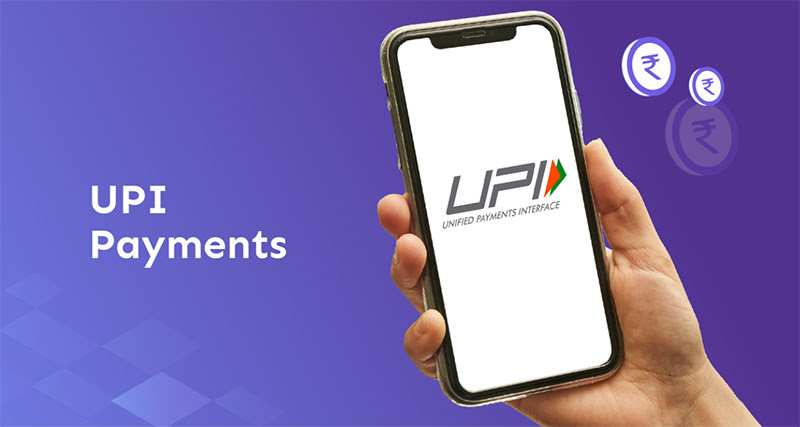The revolutionary UPI technology, which stands for “Unified Payments Interface,” lets you send and receive money, pay bills instantly, and authorize transactions on a single application in one step. For digital payments in real time, this technology works with a smartphone application that supports UPI. Without having to carry debit or credit cards, users can manage multiple bank accounts, check account balances, and make purchases using multiple payment methods. This makes the entire payment process simpler.
UPI Payments
India has made a significant progress toward becoming a cashless economy with the introduction of the Unified Payment Interface (UPI). You can use your smartphone as a virtual debit card with this new UPI payment model. UPI has additionally brought in moment cash sending and getting conceivable. What then is UPI? Let’s find out what UPI stands for and how it is an important first step toward digitizing India’s economy.
Also Check:-
What is UPI?
The abbreviation “UPI” means “Brought together Installments Point of interaction.” The introduction of the Unified Payment Interface (UPI) marked India’s first significant step toward a cashless economy. Your smartphone can now be utilized as a virtual check card, on account of the new component. Additionally, money can be received and sent with UPI.
Who Initiated UPI?
UPI is being developed jointly by the Indian Banks Association (IBA), the Reserve Bank of India (RBI), and the National Payments Corporation of India (NPCI). Similar to Visa and MasterCard, NPCI is in charge of the RuPay payment infrastructure. It enables the communication and transfer of funds between various banks. The Immediate Payments Service (IMPS) also involves NPCI. UPI is thought to be IMPS’s more advanced version.
What is UPI ID & PIN?
A UPI PIN is a four-digit individual ID number that should be placed to approve a cash move through UPI. The record holder can choose their PIN. The procedure for creating your own UPI PIN is as follows:
- Within the app, select the bank account you want to use for transactions.
- You will be asked to create your UPI PIN after selecting a bank account.
- The registered mobile number associated with your bank account will receive a One-Time Password.
- To obtain your UPI PIN, enter this OTP.
- Create your UPI PIN, which is four digits long and will be required for all transactions.
Also Check:-
Universal Account Number (UAN) Login
How does UPI Work?
UPI is a digital way to move money from one bank to another that doesn’t need an account number, bank name, account type, or IFSC. Instead, it uses the bank’s website instead. You must have the following in place before you can transfer money using UPI:
- A checking account
- Active mobile phone number
- A mobile phone
- A connection to the internet
- You will need to register for UPI and generate a UPI mPIN once you have these items. After successfully registering and creating an mPIN, you can now use UPI.
To send or get reserves through UPI, you should have a UPI-based versatile application, for example, BHIM UPI, Google Pay, PhonePe, and so on.
Features of UPI
- UPI empowers ongoing cash moves between financial balances, guaranteeing speedy and consistent exchanges.
- Users are able to conduct transactions at any time, even outside of standard banking hours, thanks to its round-the-clock services.
- UPI offers a single platform, similar to Paytm, that enables users to link and manage multiple bank accounts from various banks through a single app.
- It eliminates the need to share information about each transaction’s bank account. To receive payments safely, users can create a unique UPI ID, similar to an email address.
- Person-to-person transfers, payments to merchants, bill payments, and even cash-on-delivery transactions are all made possible by UPI.
- UPI’s “Scan and Pay” feature makes it easy for customers to pay without using cards or cash by scanning QR codes instead.
Also Check:-
Benefits of UPI for Merchants
- Increased customer convenience: Customers can use UPI to make payments directly from their bank accounts without having to use cash or a credit card. Customers’ overall payment experience is improved as a result.
- Faster settlement: Merchants can receive payments immediately thanks to UPI’s real-time fund transfers. This makes cash flow better and shortens the time it takes for settlement.
- Wide customer reach: Since UPI is supported by a number of banks and payment service providers, it can be used by a large number of people. Customers from various banks can be attracted to a broader market by merchants.
Final Words
In India, a real-time payment system known as UPI (Unified Payments Interface) makes it possible for funds to be transferred immediately between bank accounts. It makes it simple and secure for users to make payments by linking multiple bank accounts to a single mobile application. In collaboration with a number of banks and payment service providers, the Reserve Bank of India (RBI) and the National Payments Corporation of India (NPCI) launched it. By making it simple and convenient to transfer money, UPI hopes to promote financial inclusion and simplify digital payments.
